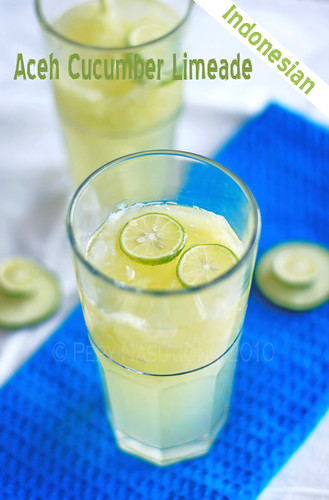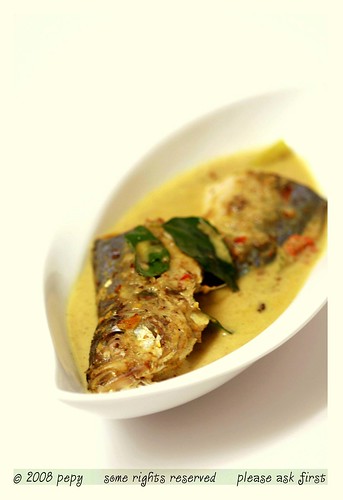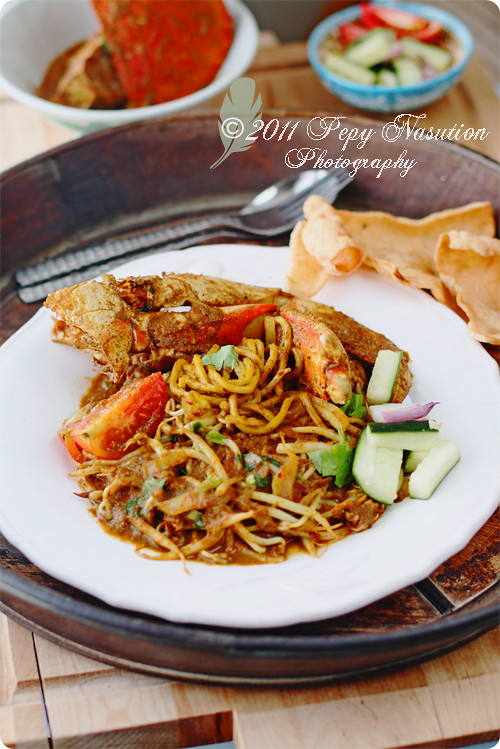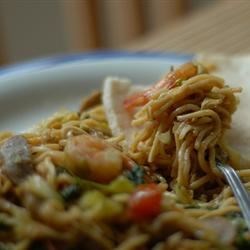There are many varieties of sate in Indonesia; peanut, sweet soy sauce or curry base. Sate Padang is one that has curry base sauce. It consists similarity to Minangese rendang spices, turmeric leaves and other spices.
All is made from oxtongue and beef, but they have a different sauce. Sate Padang has a thick and very hot sauce or gravy due to peanuts and ample chilies. Also, Sate Padang has a combination taste of Sate Pariaman and Padang Panjang. While Sate Pariaman has red gravy, Sate Padang Panjang has yellow one.
Ingredients:
- 908 g (2 lbs) oxtongue (or beef or combination of two)
- 8 kaffir lime leaves
- 2 stalks of lemongrass, take only the white part, bruised
- 1 turmeric leaves, knotted (optional)
- 2 asam kandis (I substituted for kokam or gorakha, it can be found at Indian/Caribbean markets)
- water for boiling ox tongue
- bamboo skewers
- cooking oil
- ½ – ¾ cup rice flour, dissolved in a small amount of water
Spices to grind:
- 7 shallots
- 3 cloves garlic
- red cayenne peppers (I substitute for ground chilies as many as you can handle the hot flavour)
- 3 cm long galangal
- 2 cm long ginger
- 2 cardamoms
- 1 tsp ground coriander
- ½ tsp cumin powder
- 2 tsp curry powder (I prefer the Srilankan curry powder)
- ground white pepper and salt as needed
Condiments:
- rice cake (ketupat)
- fried shallots (bawang goreng)
Directions:
- In a pot, add water and bring to a boil. Add oxtongue, cook for about next 15 minutes.
- Remove ox tongue from the pot and save 750 mL of the liquid. Scrape the ox tongue with a knife. Rinse well under running water. Cut into cubes (1x2x1 cm3).
- In the same pot, combine 750 mL liquid, ox tongue cubes, ground spices, turmeric leaves, kaffir lime leaves, lemongrass, asam kandis and salt. Bring into a boil then reduce the heat, simmer until the tongue completely cooked.
- Thread 4-5 pieces of tongue into each skewer. Brush with a small amount of cooking oil and grill couple of minutes until both sides are brown (do not grill too long as ox tongue is already cooked).
Gravy:
- Simmer the broth.
- Gradually pour into rice flour mixture while stirring.
- Keep stirring until the gravy thickens.
Serving suggestion:
Place Sate Padang and rice cake on the plate. Pour the gravy over and garnish with fried shallots. Serve while it’s still hot.
Note:
If you are using beef, you don’t need to boil with water first. Cut the the beef into cubes, combine with water and spices and boil.














